Potrebujeme váš súhlas na využitie jednotlivých dát, aby sa vám okrem iného mohli ukazovať informácie týkajúce sa vašich záujmov. Súhlas udelíte kliknutím na tlačidlo „OK“.
ASTM D7414-09
Standard Test Method for Condition Monitoring of Oxidation in In-Service Petroleum and Hydrocarbon Based Lubricants by Trend Analysis Using Fourier Transform Infrared (FT-IR) Spectrometry
Automaticky preložený názov:
Štandardná skúšobná metóda pre sledovanie stavu oxidácie do ďalšieho ropu a na báze uhľovodíka mazív Trend analýzy pomocou Fourier Transform Infrared (FT-IR) spektrometria
NORMA vydaná dňa 1.7.2009
Informácie o norme:
Označenie normy: ASTM D7414-09
Poznámka: NEPLATNÁ
Dátum vydania normy: 1.7.2009
Kód tovaru: NS-38393
Počet strán: 5
Približná hmotnosť: 15 g (0.03 libier)
Krajina: Americká technická norma
Kategória: Technické normy ASTM
Kategórie - podobné normy:
Anotácia textu normy ASTM D7414-09 :
Keywords:
condition monitoring, differential trend analysis, direct trend analysis, Fourier transform infrared, FT-IR, hydrocarbon based lubricants, in-service petroleum lubricants, infrared, IR, lubricants, oils, oxidation, ICS Number Code 75.100 (Lubricants, industrial oils and related products)
Doplňujúce informácie
| Significance and Use | ||||||||||||||||||||||||
|
A large number of compounds, such as aldehydes, ketones, esters, and carboxylic acids, are produced when oils react with atmospheric oxygen. Oxidation is measured using a common FT-IR spectral feature between 1800 and 1670 cm-1 caused by the absorption of the carbonyl group present in most oxidation compounds. These oxidation products may lead to increased viscosity (causing oil thickening problems), acidity (causing acidic corrosion), and formation of sludge and varnish (leading to filter plugging, fouling of critical oil clearances and valve friction). Monitoring of oxidation products is therefore an important parameter in determining overall machinery health and should be considered in conjunction with data from other tests such as atomic emission (AE) and atomic absorption (AA) spectroscopy for wear metal analysis (Test Method D 5185), physical property tests (Test Methods D 445 and D 6304), base reserve (Test Method D 2896 and D 4739), acid number tests (Test Methods D 664 and D 974) and other FT-IR oil analysis methods for nitration (Practice E 2412), sulfate by-products (Test Method D 7415), additive depletion (Test Method D 7412), breakdown products and external contaminants (Practice E 2412), which also assess elements of the oil’s condition, see Refs (1-6). |
||||||||||||||||||||||||
| 1. Scope | ||||||||||||||||||||||||
|
1.1 This test method covers monitoring oxidation in in-service petroleum and hydrocarbon based lubricants such as in diesel crankcase, motor, hydraulic, gear and compressor oils, as well as other types of lubricants that are prone to oxidation. 1.2 This test method uses Fourier Transform Infrared (FT-IR) spectrometry for monitoring build-up of oxidation products in in-service petroleum and hydrocarbon based lubricants as a result of normal machinery operation. Petroleum and hydrocarbon based lubricants react with oxygen in the air to form a number of different chemical species, including aldehydes, ketones, esters, and carboxylic acids. This test method is designed as a fast, simple spectroscopic check for monitoring of oxidation in in-service petroleum and hydrocarbon based lubricants with the objective of helping diagnose the operational condition of the machine based on measuring the level of oxidation in the oil. 1.3 Acquisition of FT-IR spectral data for measuring oxidation in in-service oil and lubricant samples is described in Practice D 7418. In this test method, measurement and data interpretation parameters for oxidation using both direct trend analysis and differential (spectral subtraction) trend analysis are presented. 1.4 This test method is based on trending of spectral changes associated with oxidation of in-service petroleum and hydrocarbon based lubricants. Warnings or alarm limits can be set on the basis of a fixed minimum value for a single measurement or, alternatively, can be based on a rate of change of the response measured, see Ref (1). 1.4.1 For direct trend analysis, values are recorded directly from absorption spectra and reported in units of absorbance per 0.1 mm pathlength. 1.4.2 For differential trend analysis, values are recorded from the differential spectra (spectrum obtained by subtraction of the absorption spectrum of the reference oil from that of the in-service oil) and reported in units of 100*absorbance per 0.1 mm pathlength (or equivalently absorbance units per centimetre). 1.4.3 In either case, maintenance action limits should be determined through statistical analysis, history of the same or similar equipment, round robin tests or other methods in conjunction with the correlation of oxidation changes to equipment performance. Note 1—It is not the intent of this test method to establish or recommend normal, cautionary, warning or alert limits for any machinery. Such limits should be established in conjunction with advice and guidance from the machinery manufacturer and maintenance group. 1.5 This test method is for petroleum and hydrocarbon based lubricants and is not applicable for ester based oils, including polyol esters or phosphate esters. 1.6 The values stated in SI units are to be regarded as standard. No other units of measurement are included in this standard. 1.6.1 Exception—The unit for wave numbers is cm-1. 1.7 This standard does not purport to address all of the safety concerns, if any, associated with its use. It is the responsibility of the user of this standard to establish appropriate safety and health practices and determine the applicability of regulatory limitations prior to use. |
||||||||||||||||||||||||
| 2. Referenced Documents | ||||||||||||||||||||||||
|
Podobné normy:
Historická
1.4.2013
Historická
1.7.2013
Historická
1.7.2013
Historická
1.12.2011
Historická
1.9.2014
Historická
1.8.2011
Odporúčame:
EviZak - všetky zákony vrátane ich evidencie na jednom mieste
Poskytovanie aktuálnych informácií o legislatívnych predpisoch vyhlásených v Zbierke zákonov od roku 1945.
Aktualizácia 2x v mesiaci !
Chcete vedieť viac informácii ? Pozrite sa na túto stránku.


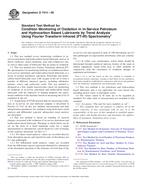
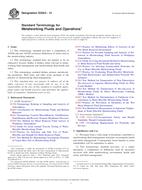 ASTM E2523-13
ASTM E2523-13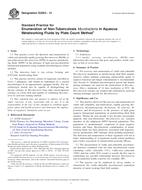 ASTM E2563-13
ASTM E2563-13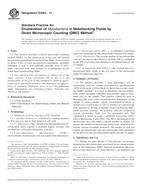 ASTM E2564-13
ASTM E2564-13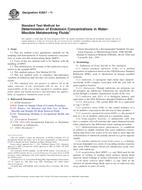 ASTM E2657-11
ASTM E2657-11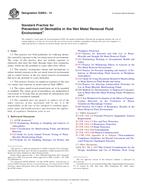 ASTM E2693-14
ASTM E2693-14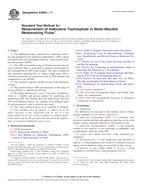 ASTM E2694-11
ASTM E2694-11
 Cookies
Cookies
